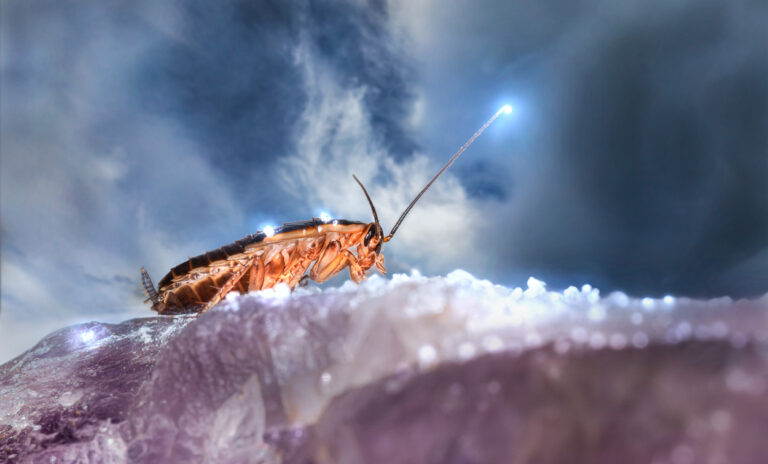Scientists create cyborg cockroaches to save human lives
From fruit flies to spider carcasses, scientists across the world are increasingly hacking into the brains of live animals and repurposing dead ones to help mankind in one way or another—thereby ushering in the age of ‘cyborg insects’. The latest subject on their list is none other than a zig-zagging household pest, modified to save the lives of its own exterminators.
Kenjiro Fukuda and his team at the RIKEN research institute’s Thin-Film Device Laboratory have now developed a swarm of remote-controlled cyborg cockroaches that are capable of embarking on search-and-rescue missions after natural disasters like earthquakes and quickly locate survivors trapped under the rubble. Revolutionary, indeed.
The researchers first developed a solar cell-powered backpack containing a flexible film that’s four microns thick—about 1/25 the width of a human hair. The tiny modules were then mounted on the insect’s back which stimulated their nerve-like appendages known as cerci, ultimately allowing the scientists to control them from a distance and signal the ideal direction they should move in.
While the ultra-thin film allows the robo-roaches to move freely, the solar cell backpack generates enough power to process and send these directional signals into their sensory organs.
This is why Fukuda and his team chose Madagascar hissing cockroaches for the experiment. Capable of growing up to 2.4 inches long, the species is big enough to carry the equipment and have no wings that would get in the way. Even when the electronic pack and film are glued to their backs, the bugs can cross over small obstacles and right themselves when flipped over.

As noted by Reuters, the team’s work builds upon previous insect-control experiments carried out at Nanyang Technological University in Singapore and could one day result in cyborg insects that can enter hazardous areas and monitor the environment more efficiently than synthetic robots.
“The batteries inside small robots run out quickly, so the time for exploration becomes shorter,” Fukuda told the publication. “A key benefit (of a cyborg insect) is that when it comes to an insect’s movements, the insect is causing itself to move, so the electricity required is nowhere near as much.”
However, the research still has a long way to go before the robo-roaches can be deployed as first respondents to a disaster. “In a recent demonstration, RIKEN researcher Yujiro Kakei used a specialised computer and wireless Bluetooth signal to tell the cyborg roach to turn left, causing it to scramble in that general direction. But when given the ‘right’ signal, the bug turned in circles,” Reuters explained.
The next challenge posed to the team of scientists is hence miniaturising the components so that the insects can move more easily and to allow for mounting of sensors and even cameras in the future.
That being said, the innovation can’t be mentioned without addressing the ethical debate attached to the entire concept of cyborg insects. In recent years, several studies have looked at how bugs might be able to experience emotive states and feel pain—ultimately noting that there’s still a lack of understanding about insect consciousness.
In the case of cyborg cockroaches, however, the backpack and film can be removed, allowing the bugs to go back to life in the lab’s terrarium. “The insects mature in four months and have been known to live up to five years in captivity,” Reuters added. Fukuda also linked back to papers and mentioned that “cockroaches do not experience pain.”
“Since abdominal deformation is not unique to cockroaches, our strategy can be adapted to other insects like beetles, or perhaps even flying insects like cicadas in the future,” the lead researcher further admitted in a press release.






